Dell’s Joyce Mullen On Reaching Channel Partner Program ‘Nirvana’
Dell Technologies global channel chief Joyce Mullen talks to CRN about enhancing Dell’s partner program, driving product integration across the company, and how partners can make money selling the Dell Technologies Cloud.
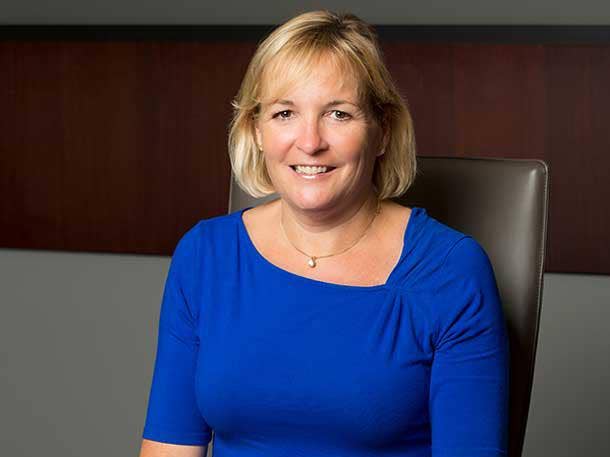
Dell Technologies Reaching For Channel Nirvana
Dell Technologies global channel leader Joyce Mullen is striving to create channel “nirvana” with a partner program that is completely self-service and automated across the Dell Technologies family of brands.
“Nirvana is when the deal registration processes of VMware and Dell are linked together for opportunities. Nirvana is when all the tools work the same across all the product lines whether it’s Boomi or SecureWorks or VMware deals,” said Mullen, president of global channel, OEM and IoT at Dell Technologies, in an interview with CRN. “Full self-service and automation, including pricing, is really where we want to go next.”
The $91 billion Round Rock, Texas-based infrastructure giant plans to enhance and tweak its Dell Technologies partner program in its next fiscal year, which starts in February, by providing partners with more tools.
In an interview with CRN, Mullen explains her vision for Dell’s partner program, where partners can make money selling the new Dell Technologies Cloud, and the company’s long-term integration strategy. “Overall, you will see more and more solutions that incorporate Dell IP, SecureWorks IP, VMware/Pivotal IP, Carbon Black IP—all these pieces that we have,” she said. “We will bring it all together.”
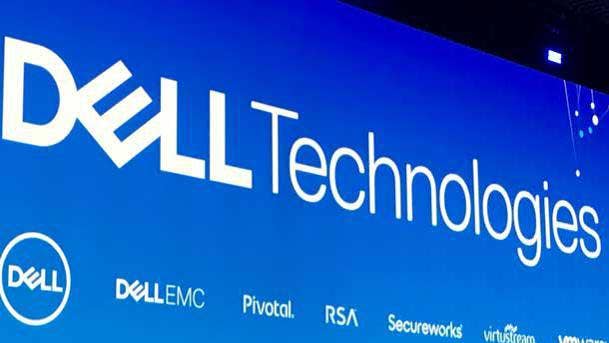
What is Dell Technologies’ long-term integration strategy with VMware, Dell EMC, Pivotal and soon-to-be Carbon Black under your umbrella?
Overall, you will see more and more solutions that incorporate Dell IP, SecureWorks IP, VMware/Pivotal IP, Carbon Black IP—all these pieces that we have. So our Unified Workspace solutions is one example. VxRail is probably the simplest example. I would expect that you’ll see more and more solutions that incorporate IP from various parts of the company. We will bring it all together. [VMware CEO] Pat [Gelsinger] was really explicit about the security industry because I would say the security industry hasn’t really figured it out yet. There’s still breaches all the time. We’re just kind of one step in front of the bad guys or we’re catching up to the bad guys. So this notion that Pat introduced around intrinsic security is really powerful. It’s a good example of how we would incorporate some of our security IP from various pieces of the company and management and orchestration with VMware solutions.

How close are VMware and Dell going to be in terms of both the channel and innovation?
We said it many times, VMware is always going to have its own separate partner program and will continue to serve a very broad group of partners and OEMs. Dell will have a partner program that certainly has some overlap, but it obviously has different components of the ecosystem that VMware wouldn’t have. So you can expect to still see the very important independence for both parts of the company. But I definitely expect that we will see more and more solutions incorporate technologies from various aspects of the company. That is super exciting and highly differentiated for us.
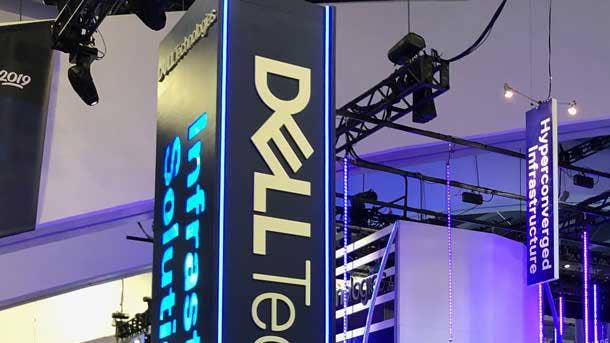
What is your mantra for the Dell Technologies partner program?
We always want to not respond too violently because this notion of simple, predictable and profitable is the mantra of that we talk about all the time. We know partners really value predictability. When we do make changes, we make changes that are pretty clearly understood so we’re not sort of revamping the whole program every year. Last year we did that. Based on partner feedback, for this year, we are incorporating a whole lot of feedback. We will see some changes this year. First of all, we’re making sure that the program design for next year continues to focus on customer acquisition—whether that’s through end customer retention or whether that’s through refreshing assets or giving people incentives for competitive swaps or adding just net-new customers. This is a big focus for us. That’s the way we grow. We’re doing a fabulous job with the channel—around 35,000 new customers through partners in first half of the year, that’s up 11 percent over the previous year. So the channel is driving that acquisition engine. We want to keep that going with the new program [next fiscal year].
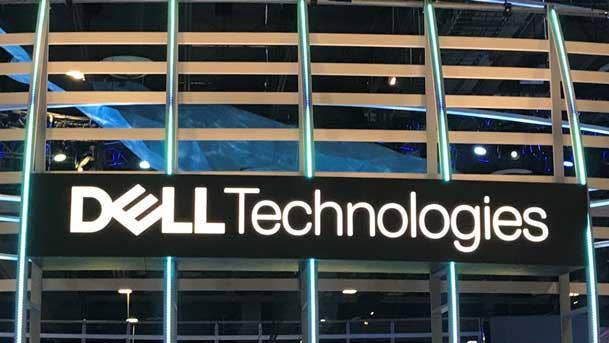
What can partners expect in next year’s partner program?
We’re expanding our online platforms so we’re going to continue, under [new Chief Digital Officer] Jen [Felch’s] direction, to include more and more self-service pricing, integration and also include more intuitive end-user, partner data entry into our Solutions Configurator tool. We’re basically looking at best of breed to try to understand exactly where the technology is going and incorporating that into our partner tools as well as our core Dell seller tools. That’s pretty good. It will take awhile before we’ve completely transformed that experience through all product lines.
When you say ‘all product lines’ does that include all the brands of Dell Technologies?
Yes. That’s the part that’s going to take a little longer. We’re making some really good progress because many products are already available through these tools now. Nirvana is when the deal registration processes of VMware and Dell are linked together for opportunities. Nirvana is when all the tools work the same across all the product lines whether it’s Boomi or SecureWorks or VMware deals. We have some work to do to get there, but that’s the vision. That is what we’re calling the ‘Dell Digital Way.’ … The Dell Digital Way is a big component of some of the function improvements we’re trying to make operationally around automation and self-service.

Talk about some of the new tools you’re enabling partners with to make more money?
For deal registration, a key enhancement this year is our engaged channel feature in Salesforce.com. This allows us to look at an existing opportunity and essentially be converted to an accepted deal registration for our partner. So the salespeople can say, ‘I need a partner. This is the partner I’m going to engage with.’ That doesn’t force the partner to go through the owners’ process of registering the deal. It’s really important in situations where a partner registers an opportunity, we want to accept it but there’s already an existing opportunity in the system because our Dell sellers already know about it too—so this allows us to collaborate much more seamlessly. It’s really been helping a lot. It’s going to eliminate a lot of churn in the deal registration process.
Another area is around quoting. We’ve made significant improvements with our Solutions Configurator tool and we are enabling this for storage this year. This should allow our partners to self-service on-boarding of new users directly by the partner’s administrator. It’s going to enable our sales teams and our partners to actively collaborate on configuration in a tool, so you don’t have to get on the phone every time. It will allow an order check-out capability so that partners can place the orders without having to talk to somebody on the phone. That’s huge and that’s a good step forward. Full self-service and automation, including pricing, is really where we want to go next.

Longtime Dell veteran Jennifer Felch was recently appointed to the new position of Chief Digital Officer. What type of impact will she have on Dell Technologies?
Jen as the chief digital officer has responsibility for all of the IT activities, plus is working closely with the product teams because we’re building software and IT capabilities into lots of our products and solutions. There’s technology that we’re building to run the systems and tools behind the scenes in the company. There’s development platforms that we’re using and all sort of different business units and things like that. The idea here is that we bring all of this technology under one roof and we figure out how to do that way more efficiently than we have in the past. I had a great partner provide an example. The partner said, ‘What would really be nirvana is if you guys could figure out how to basically take your tools that are set up to monitor the performance of your storage array, for example—we have tools like Live Optics that do that—but then if you could also incorporate security, breach attempts, broad management, etc.’ So we do all of those things today but we do them separately. The idea is how do we integrate all this stuff? Because at the end of the day, it’s all about managing an increasingly complicated infrastructure environment across multiple clouds.

How can partners make the most money selling the Dell Technologies Cloud?
This is no different from how partners make money with AWS and public clouds all over the place. The fact is our average customer is using 3.1 clouds today, so over three clouds. But that number is going up. If you think about where can partners make money with Dell Technologies Cloud, the first and most obvious place is architecting an environment that helps customers understand which workloads should work where. It’s really consulting in terms of helping customers understand what their environment looks like today and where it’s going to go for optimal efficiency, cost, scale, etc. Second, there is clearly an opportunity to resell the Dell Technologies Cloud. There’s an opportunity to finance that with Dell Financial Services. All of those things help partners make money. Then there’s attaching services to the Dell Technologies Cloud in more of a traditional resale opportunity. But then there’s also a huge amount of consulting around re-platforming or DevOps-type work that our partners can do. They have to figure out how to re-platform apps or migrate data or whatever it is. It’s definitely a services opportunity for our partners. Then, of course, managing the Dell Technologies Cloud.
In this world of increasing complexity, increasing number of clouds, increasing types of servers that have different types of processors and accelerators, etc., there’s a significant opportunity for our partners to help customers make sense of all the complexity and make sure they are building the most modern and efficient environment to support the outcomes they’re looking for.
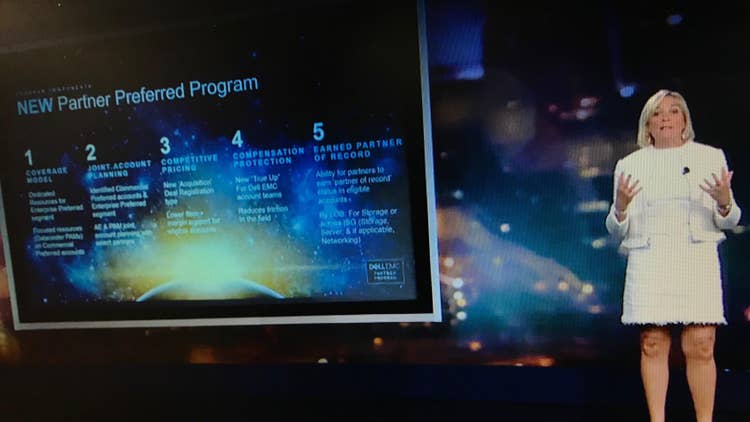
If I was a traditional Dell EMC Gold tier partner, what would your advice be?
If I were a Gold partner right now, I would make sure I had an incredibly strong understanding of the technology that Dell has to offer so that they have the confidence to lead with Dell in every single customer conversation. I’d want to make sure I understand that the incentives that we put out there for our partners are lined up to the things that are most important for us. So if you want to maximize the profitability, you’re going to attach services. You’re going to upsell in terms of the solution. You’re going to sell a whole bunch of storage and sell even more data protection because you’re going to make money there.
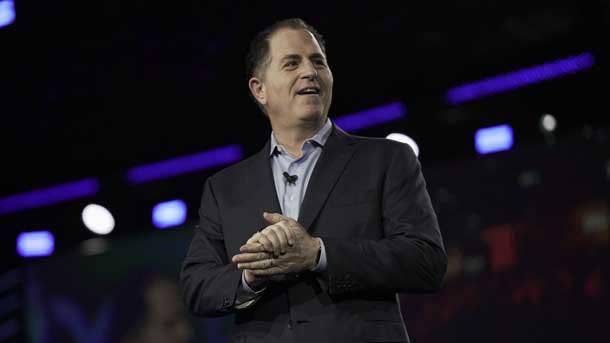
What is your long-term advice for Dell channel partners?
If you believe what [Dell Technologies CEO] Michael Dell [pictured] has predicted—that the edge is going to be bigger than the cloud, and the edge is increasingly important and the edge is pretty complicated—I would get pretty focused and super knowledgeable about one, two or a couple verticals. Because vertical knowledge will be increasingly important. If you think about the trends that we are talking about—more and more clouds, more and more server processor types, more and more accelerator cards, more and more workloads, more and more edge—a lot of that is going to be vertical-specific. Partners are going to be so critical in working with customers through the complexity of the choices and options. So an intimate understanding of a vertical is going to help partners be in a great position to be that trusted adviser so they can also sell their services, which is the way partners are going to make lots of money for many years to come.